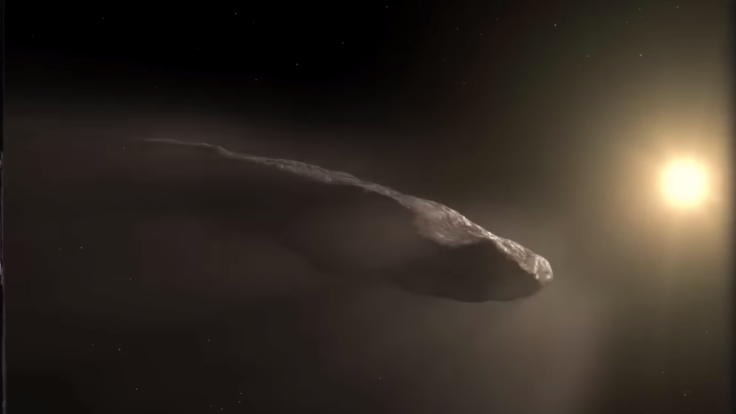3I/ATLAS Update: UN Confirms Comet Is Subject Of Formal Planetary-Defence Exercise
UN confirms 3I/ATLAS is an official planetary-defence exercise (8th IAWN drill). See the full UN document and campaign dates.

The global conversation surrounding comet 3I/ATLAS has intensified recently, sparking not only widespread fascination but also an unexpected wave of public confusion.
As this mysterious body streaks across the night sky, a single, critical question has dominated scientific forums, news threads, and online commentary: 'Is this high-profile event an official international planetary-defence exercise, or is it merely a routine scientific observation?'
This ambiguity, which has persisted despite the clear involvement of global organisations, has prompted the need for a definitive, official answer. To settle the debate once and for all, we turn to the source itself.
Here, we present an elaboration on the complete, unedited, official United Nations / IAWN publication—the document that explicitly frames 3I/ATLAS within the global framework designed to protect Earth from cosmic threats. The full context, originally documented in this analysis of the UN/IAWN document, confirms the crucial nature of the current activity.

Clearing the Cosmic Dust: The Official Planetary-Defence Stance on 3I/ATLAS
The official documentation leaves no room for doubt. The 3I/ATLAS activity is, unequivocally, the 8th IAWN observing exercise conducted under the auspices of the International Asteroid Warning Network (IAWN).
This interstellar comet, discovered on 1 July 2025 by the Asteroid Terrestrial-impact Last Alert System (ATLAS) telescope in Chile, is only the third such visitor ever confirmed to be passing through our Solar System. This initiative is part of a multi-year effort to strengthen global readiness against Near-Earth Objects (NEOs).
The fact that this exercise is taking place now, precisely when public interest—and subsequent confusion—is at its peak, underscores its significance.
This is not a drill for a fictional scenario; it is a real-world test, coordinated under the full UN planetary-defence structure, which includes IAWN, the Space Mission Planning Advisory Group (SMPAG), and the United Nations Office for Outer Space Affairs (UNOOSA).
The IAWN and SMPAG were established in 2014 following United Nations recommendations to create an internationally coordinated response to the threat of NEO impacts. IAWN is the warning hub, responsible for detection and characterisation, while SMPAG is composed of space agencies, tasked with planning potential deflection missions.
'While it poses no threat, comet 3I/ATLAS presents a great opportunity for the IAWN community to perform an observing exercise due to its prolonged observability from Earth and high interest to the scientific community. This 3I/ATLAS campaign is the 8th IAWN observing exercise since 2017—IAWN holds these exercises roughly once a year'.
The goal is to sharpen coordination, improve tracking methodologies, and prepare the world for future celestial events that might carry greater uncertainty.

Why 3I/ATLAS is the Perfect Test for Astrometric Precision
The choice of 3I/ATLAS (formally designated C/2025 N1) as the target is strategic, rooted in the specific technical challenges comets pose to astronomers and planetary defence experts.
While 3I/ATLAS is currently not a threat—its closest approach to Earth will be on 19 December 2025 at a distance of approximately 270 million kilometres—its unique interstellar trajectory and cometary activity make it an ideal practice target.
As noted in M.P.E.C. 2025-U142 (a Minor Planet Electronic Circular issued by the International Astronomical Union's Minor Planet Centre), comets create 'unique challenges for accurate astrometric measurements and orbit predictions.'
This complexity is due to their appearance; unlike the point-like nature of asteroids, comets are extended bodies featuring comae and tails.
'Cometary bodies are extended with morphological features (comae and tails) that can systematically pull centroid measurements off their central brightness peak, making trajectory estimation more complex'.
The campaign, therefore, serves a vital technical purpose: introducing and refining 'methods for improving astrometry from comet observations.'
This practice is crucial for the future, ensuring that if a truly threatening comet or Near-Earth Object were discovered, the global astronomical community could rapidly and accurately determine its trajectory and potential impact probability.
The International Asteroid Warning Network formally announced the campaign window to run from November 27, 2025 through January 27, 2026. This intensive, two-month period allows the international community to exercise their full capability to extract accurate astrometry from the comet.
A preparatory workshop was held ahead of the campaign to ensure all participants were aligned on the objectives and methodologies.
The official timeline for this critical global exercise is as follows, with all data and deadlines remaining unchanged:
3I/ATLAS Comet Astrometry Campaign — Key Dates:
- Registration Deadline: Nov 7, 2025, 17:00 UTC
- Comet Astrometry Workshop: Nov 10, 2025, 15:00 UTC
- Kick-Off Email Notification: Nov 25, 2025
- Observing Window Opens: Nov 27, 2025
- Mid-Campaign Check-In: Dec 9, 2025, 15:00 UTC
- Observing Window Closes: Jan 27, 2026
- Close-Out Telecon: Feb 3, 2026, 15:00 UTC
The 3I/ATLAS exercise is far more than a technical drill; it is a live demonstration of global preparedness. By focusing on this challenging interstellar comet—an object that poses no immediate danger—the International Asteroid Warning Network (IAWN) is actively stress-testing the very systems designed to protect our planet from future, potentially hazardous threats.
This work strengthens collaboration between space agencies (SMPAG) and the diplomatic arm of the United Nations (UNOOSA), proving that planetary defence is a continuous, coordinated effort.
© Copyright IBTimes 2025. All rights reserved.



















